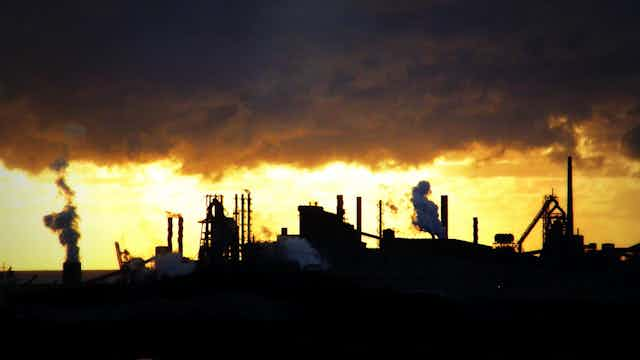Ever heard of “environmental justice”? No? It links social and environmental discrimination. Still doesn’t sound familiar? Well if you’ve seen the movie Erin Brockovich - which examines how a single mother fought against a Californian utility that polluted the environment - you’ve watched a movie about environmental justice.
“Environmental justice” describes efforts to fix the pollution burden faced by marginalised groups. Such groups usually lack social, economic, and political power. They include indigenous people, poor people, immigrants, homeless, elderly, non-white people, people with disabilities, unemployed, sole-parents and the like.
Earlier this year the Victorian Environmental Defenders Office quietly released a potentially groundbreaking report on environmental equity in Australia. Until now, Australia has paid little attention to environmental justice, but this report has the potential to radically alter Australia’s planning landscape.
What is environmental justice and where did it come from?
The environmental justice movement began as an offshoot of the US civil rights movement in the United States in the late 1970s, but has since grown internationally. At first, it was a grassroots response to pollution in communities. “People of colour” (African-Americans, Latinos, Asians and others) lived in neighbourhoods hosting noxious land uses such as waste dumps and polluting factories.
They fought against corrupt businesses, discriminatory land use zoning, biased decision-making and unequal law enforcement. They used protests, community rallies and direct political action to achieve their goals.
In 1991, the National People of Color Summit in Washington DC adopted Environmental Justice Principles. Since then, researchers have demonstrated that marginalised people are significantly more likely to inhabit polluted, dangerous, or otherwise unhealthy places. Scholars have documented hundreds of cases of environmental injustice.
Marginalised Australians in contaminated areas
Until recently, Australia has not had a recognisable environmental justice movement. This is surprising. Nearly every Australian city has contaminated industrial areas that are close to working-class neighbourhoods. These places have extensive air, soil and water pollution. Marginalised and vulnerable people also live nearby. They include recent immigrants, indigenous people, homeless, unemployed, and the working poor. Such groups also lack easy access to environmental benefits like parks and green space.
In Australia, the plight of poor and marginalised people who live in toxic and polluted neighbourhoods has typically been identified as a “social justice” or “public health” issue, not as an environmental concern.
Like its US counterpart, the Australian environmental movement has mostly been white, middle-class, and concerned with protecting so-called wilderness areas. But Australia may now be on the cusp of embracing environmental justice, thanks to the Victorian EDO’s environmental justice report.
The report is based on detailed research. It discusses three Australian case studies: a toxic dump in Tullamarine; indigenous involvement in the Murray-Darling Basin Plan; and coal seam gas and desalination plants in rural Australia.
The report suggests that environmental justice is not recognised in the same way here as in the United States. But it also acknowledges that this might be about to change. The report gives particular attention to the problems with Australia’s environmental planning and environmental enforcement systems. And it makes recommendations for how these problems might be remedied.
The evidence is in, time for action
Australian scholars have also begun to investigate environmental justice issues. There are now several excellent studies demonstrating that Australia has environmental justice problems. These problems include coal seam gas and coal dust pollution, climate justice, exposure to asbestos and lead, pesticide contamination, remote indigenous settlements, and access to green space.
For example, in 2003 Mariann Lloyd-Smith and Lee Bell documented a chemical fire in a toxic waste dump in Bellevue, Western Australia. They investigated how local authorities dismissed residents concerns about health impacts. Annemarie De Vos and Jeffery Spickett also examined the same fire from an environmental health perspective. Both studies found lax enforcement of environmental laws, poor regulation, haphazard monitoring and very poor follow-up with residents. The Australian Broadcasting Corporation has followed the case in a report on Stateline in 2006, and in a Four Corners story.
Australian planning and environmental regulatory systems have left a legacy of harm in our cities, towns and rural areas. This harm has affected both nature and people. Asbestos roofs, soil and water contamination, air pollution and toxic waste dumps exist in every state.
Planning law changes are taking us backwards
Recent changes to state planning laws in Queensland, and forthcoming changes in New South Wales, mean that environmental injustices are likely set to increase.
State Governments are looking to wind-back environmental regulations to boost land and property development (so called cuts to “green tape”). They are also changing the powers of local government to investigate and monitor environmental problems. And they are cutting funding to independent watchdogs protecting the public interest, watchdogs like the Environmental Defenders Office.
Without these independent organisations monitoring government actions, who will? Environmental injustice is a problem in Australia, so what are we going to do about it?

